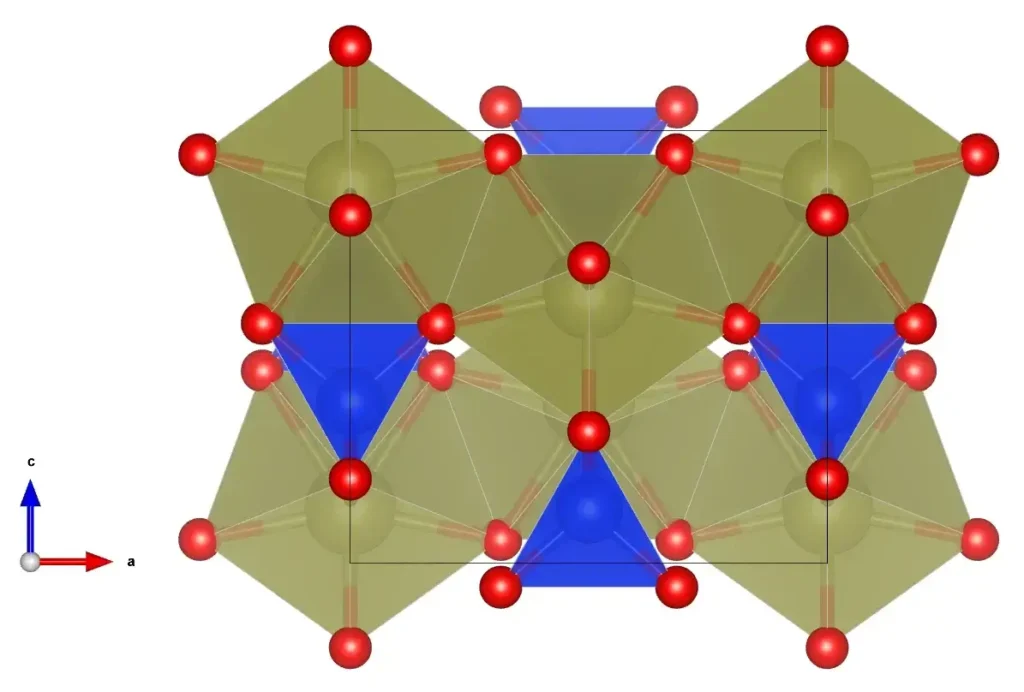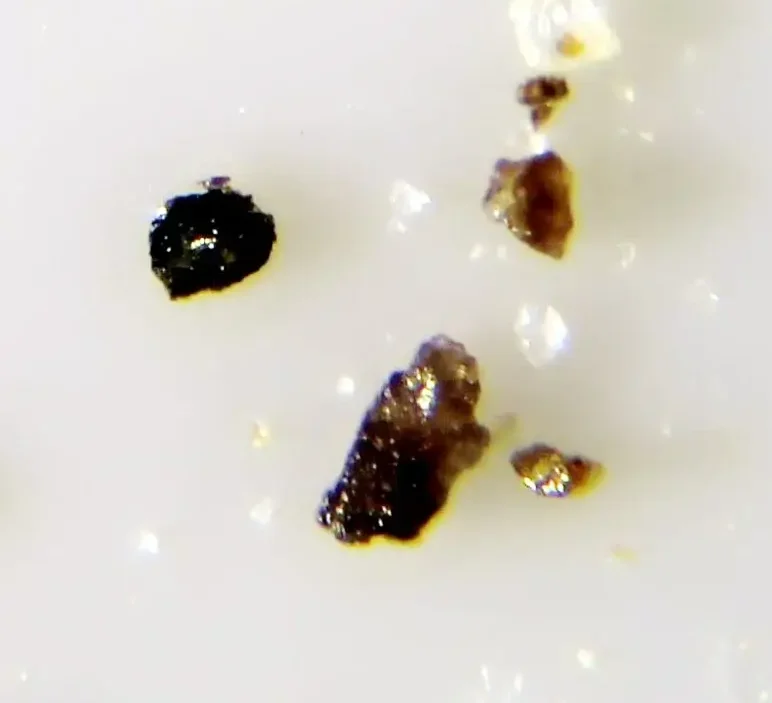Origin of Hafnon
Hafnon derives its name from the Latin word “Hafnis,” meaning Copenhagen, the city where it was first discovered in 1949. The mineral was initially identified in zirconium minerals obtained from Nigeria. Hafnon has since been found in various locations worldwide, including Russia, the United States, and Australia.
The discovery of hafnon marked an important milestone in mineralogy and geology, shedding light on the complex nature of zirconium minerals and their associated components. Researchers continue to study the origin and formation processes of hafnon to gain a deeper understanding of its properties and potential applications in various industries.
Physical Properties of Hafnon
Hafnon is a mineral known for its striking physical properties. It is usually found in the form of small crystals with a high level of transparency, making it visually appealing to observers. The mineral is renowned for its hardness, scoring around 6.5-7 on the Mohs scale, a characteristic that lends itself well to various industrial applications requiring durability.
Furthermore, hafnon exhibits a high melting point, typically around 2800 degrees Celsius, making it resistant to high temperatures. Its density is also notably high, typically ranging between 5.9 to 6.1 g/cm³, showcasing its heavy and solid nature. These physical properties contribute to hafnon’s suitability for usage in industries that require materials with excellent heat resistance and strength.
Chemical Composition of Hafnon
Hafnon, a rare mineral, is primarily composed of hafnium and zirconium. The chemical formula for hafnon is usually expressed as (Hf,Zr)SiO4, indicating the presence of silicon along with these two elements. The ratio of hafnium to zirconium in hafnon can vary, leading to a range of chemical compositions within this mineral family. It is this unique blend of elements that gives hafnon its distinct properties and characteristics.
In addition to hafnium, zirconium, and silicon, hafnon can also contain traces of other elements such as titanium, aluminum, and thorium. These impurities can influence the color, transparency, and overall quality of the hafnon specimen. The chemical composition plays a crucial role in determining the physical and chemical behavior of hafnon, making it a subject of interest for researchers studying mineralogy and geology.
Crystal Structure of Hafnon

The crystal structure of hafnon is characterized by a unique arrangement of atoms in a regular, repeating pattern. Hafnon belongs to the zirconium silicate family and adopts a tetragonal crystal system. Within this structure, hafnium atoms are surrounded by oxygen atoms, forming a stable network that contributes to its overall stability and properties.
The arrangement of atoms in the crystal lattice of hafnon allows it to exhibit high thermal stability and resistance to corrosion, making it a valuable material in various industrial applications. The tetragonal crystal structure of hafnon also imparts certain optical properties, influencing its behavior in different environments. Understanding the crystal structure of hafnon is crucial in exploring its potential uses and optimizing its properties for specific applications.
Occurrence of Hafnon in Nature
Hafnon is a mineral that is commonly found in zirconium-bearing granitic pegmatites and alkaline igneous rocks. It typically occurs in association with other minerals such as zircon, baddeleyite, and thorite. The mineral can also be found in rare earth element-enriched pegmatites and carbonatites. Hafnon is often a byproduct of the extraction of zirconium and is typically found in small quantities in various geological formations.
The mineral hafnon is known to occur in nature in a wide range of colors, including colorless, white, yellow, orange, and brown. Its occurrence can vary in terms of crystal size and quality depending on the specific geological environment in which it is formed. Hafnon crystals are usually prismatic or tabular in shape and can display distinct cleavage planes. Geological surveys have identified specific regions around the world where hafnon deposits are more prevalent, providing valuable insights for mineral exploration and extraction efforts.
Uses of Hafnon in Various Industries
Hafnon, with its high refractive index and excellent thermal stability, is a valuable material in the field of optics. The gemstone industry benefits from using hafnon as a high-quality substitute for other expensive gemstones due to its lustrous appearance and durability. Its ability to enhance the brilliance of gemstones makes it a popular choice for creating stunning jewelry pieces that captivate with their radiance.
Furthermore, the aerospace and defense industries utilize hafnon in manufacturing components for aircraft and defense systems. Its resistance to extreme temperatures and harsh environments make it an ideal material for coatings and protective layers on critical components. Hafnon’s ability to maintain its structural integrity under intense conditions ensures the reliability and safety of aerospace technology and defense systems.
Comparison of Hafnon with Other Minerals
Hafnon, a zirconium silicate mineral, has often been compared to other minerals like zircon and thorite due to their similar chemical compositions. While all three minerals belong to the same silicate mineral group, hafnon is distinguished by its higher refractive index and specific gravity compared to zircon and thorite. This difference in physical properties makes hafnon particularly valuable in industrial applications where high refractive index and specific gravity are required. Additionally, hafnon exhibits a unique crystal structure that sets it apart from other silicate minerals, providing researchers with valuable insights into its formation and potential uses.
One significant contrast between hafnon and other minerals such as zircon and thorite lies in their respective occurrences in nature. Unlike zircon, which is commonly found in beach sands and alluvial deposits, hafnon tends to occur in association with rare earth elements in specific igneous rocks. This difference in occurrence has important implications for the extraction and processing of these minerals for commercial use. Understanding these distinctions can facilitate informed decision-making in selecting the most suitable mineral for a particular application, based on factors such as availability, purity, and cost-effectiveness.
Potential Health Risks Associated with Hafnon Exposure
Exposure to hafnon can pose potential health risks to individuals, primarily due to its chemical composition. Inhalation of hafnon particles can lead to respiratory issues such as coughing, wheezing, and shortness of breath. Prolonged exposure may result in lung damage and increase the risk of conditions like pneumoconiosis.
Ingestion of hafnon-containing substances is also a concern as it may lead to gastrointestinal discomfort, including nausea, vomiting, and abdominal pain. The toxic effects of hafnon on the digestive system can be exacerbated by the body’s inability to efficiently eliminate the mineral, potentially causing long-term health complications.
Future Prospects of Hafnon Research
Future research on hafnon holds promising potential in various fields of science and technology. With advancements in materials science, exploring the unique properties of hafnon could lead to the development of novel electronic and optical devices. Understanding its crystal structure and behavior under different conditions can pave the way for innovative applications in semiconductor technology and high-performance ceramics.
Furthermore, investigations into the chemical composition of hafnon could uncover new ways to enhance its properties for specific industrial purposes. By delving deeper into the structure-property relationships of hafnon, researchers may discover opportunities to optimize its performance characteristics for advanced technological applications. Collaborative efforts between interdisciplinary teams could unlock exciting avenues for utilizing hafnon in cutting-edge technologies, propelling it into the forefront of materials research and development.
Interesting Facts About Hafnon
Hafnon, a lesser-known mineral, holds some intriguing characteristics that set it apart from others in its family. One notable fact is its unusual name origin, deriving from the Latin word “hafnium” due to its association with this element. Interestingly, hafnon bears no direct chemical relation to hafnium but was named as such to honor the discoveries of elements within the same group.
Another fascinating aspect of hafnon is its unique crystal structure, which belongs to the zircon group of minerals. This crystal structure grants hafnon distinct physical properties, such as its strikingly high refractive index and dispersion. These features make hafnon an attractive choice for applications requiring optical precision, showcasing its versatility beyond its niche presence in the mineral world.








